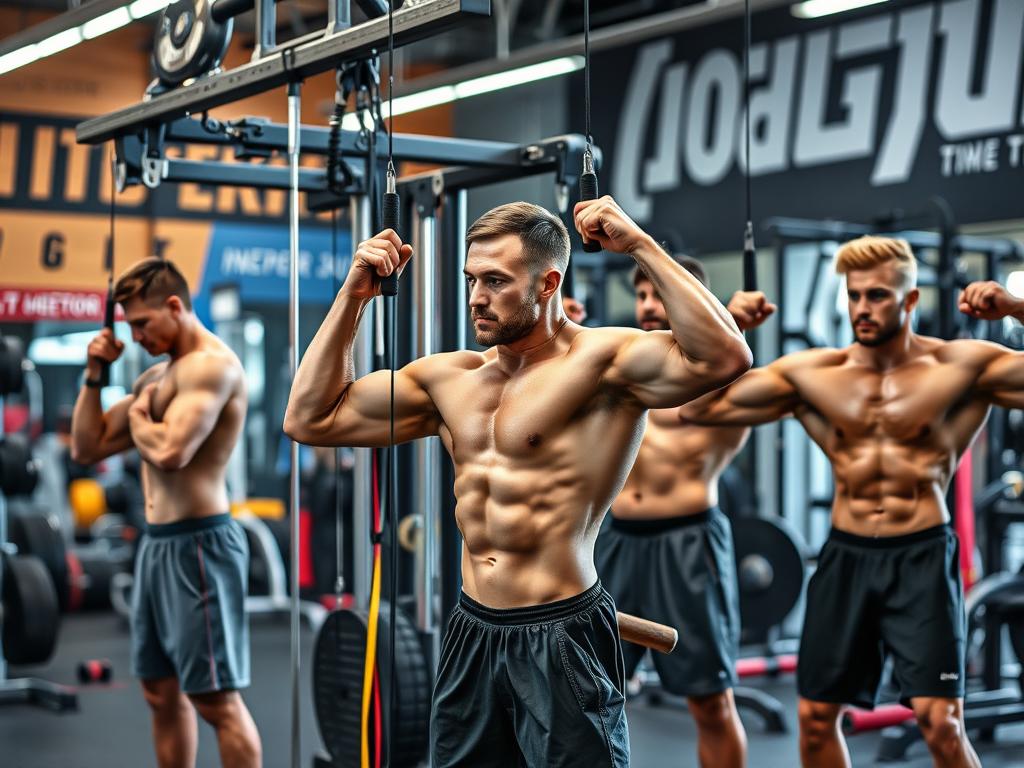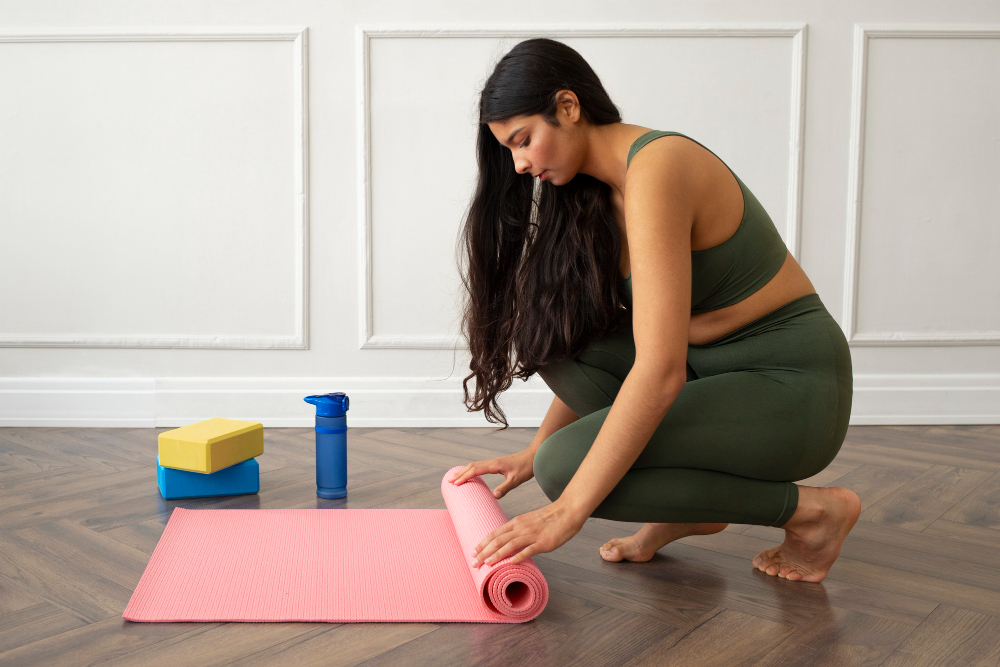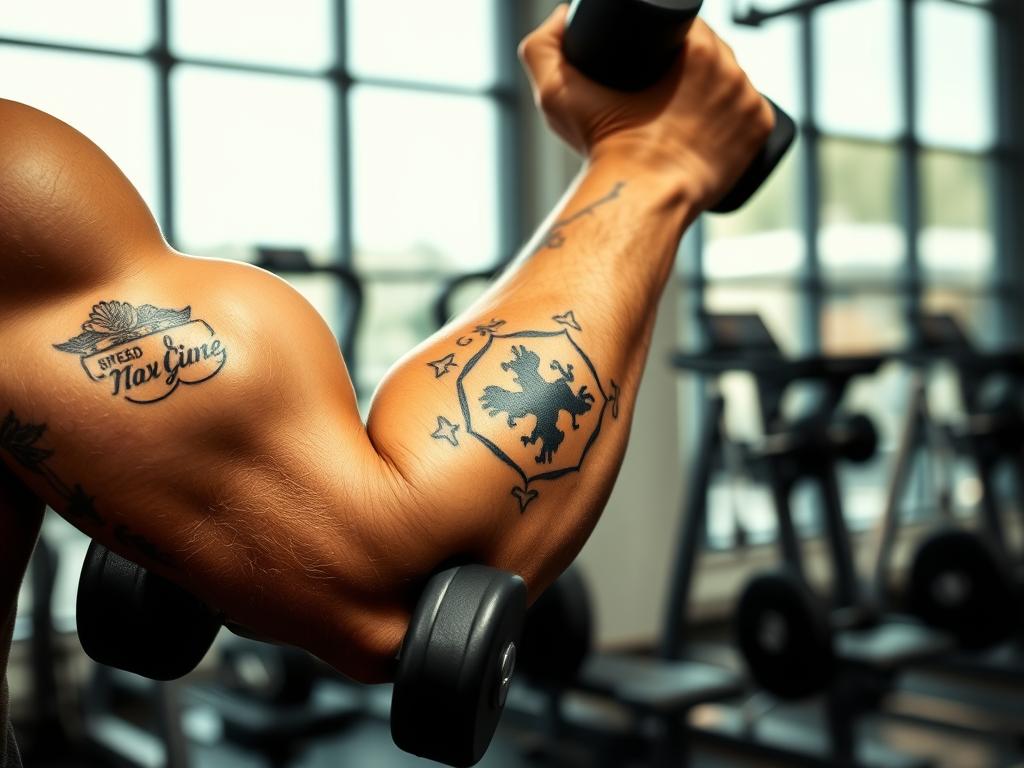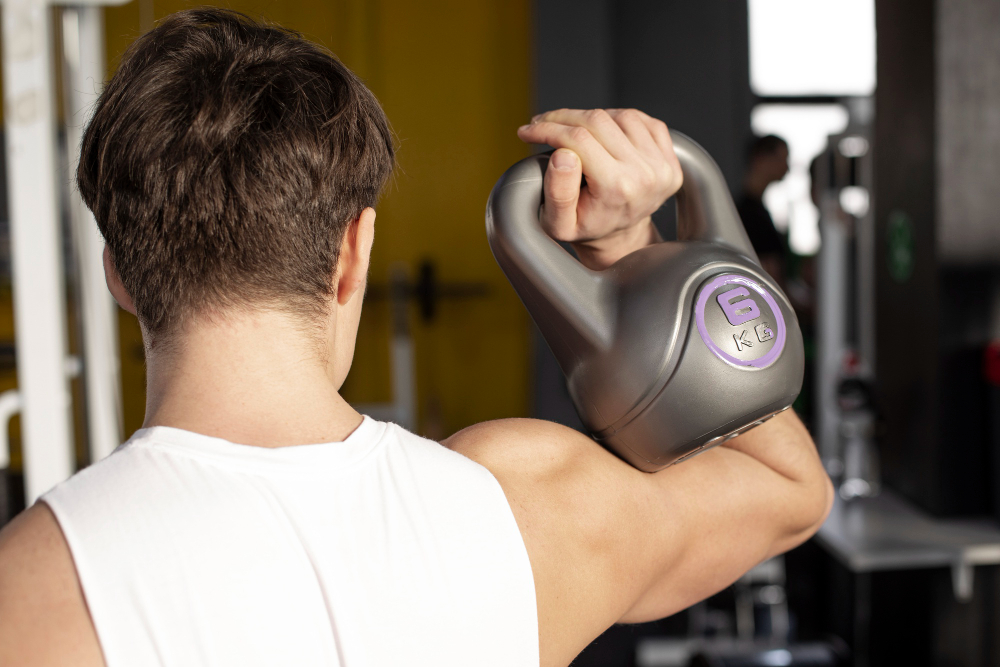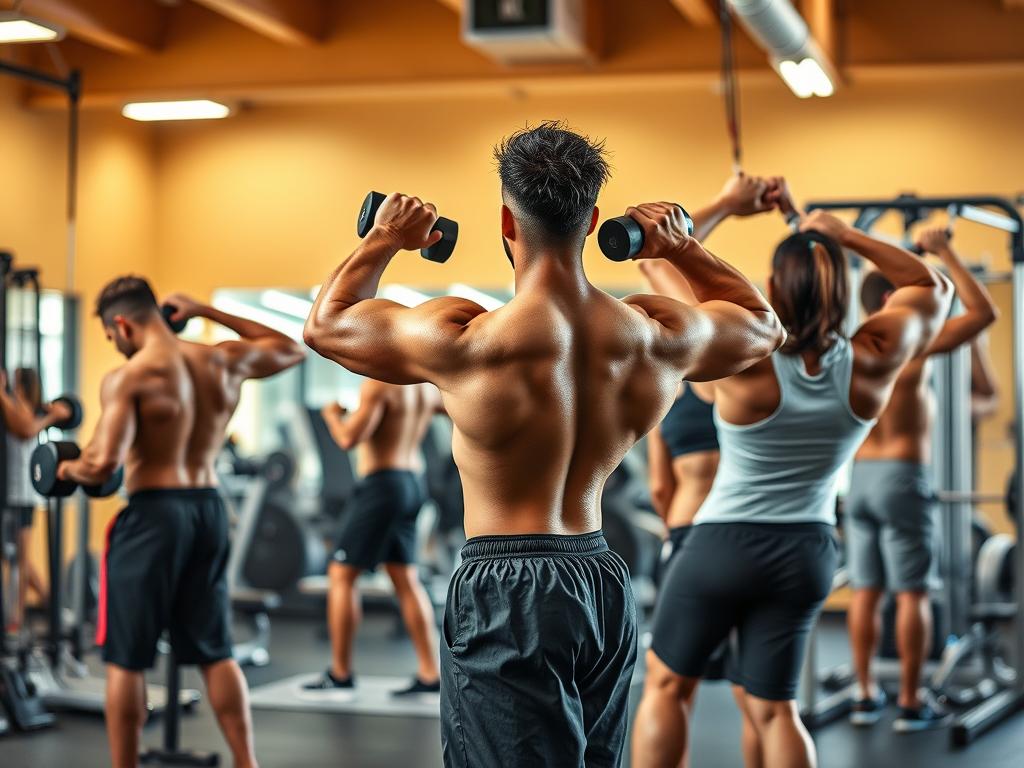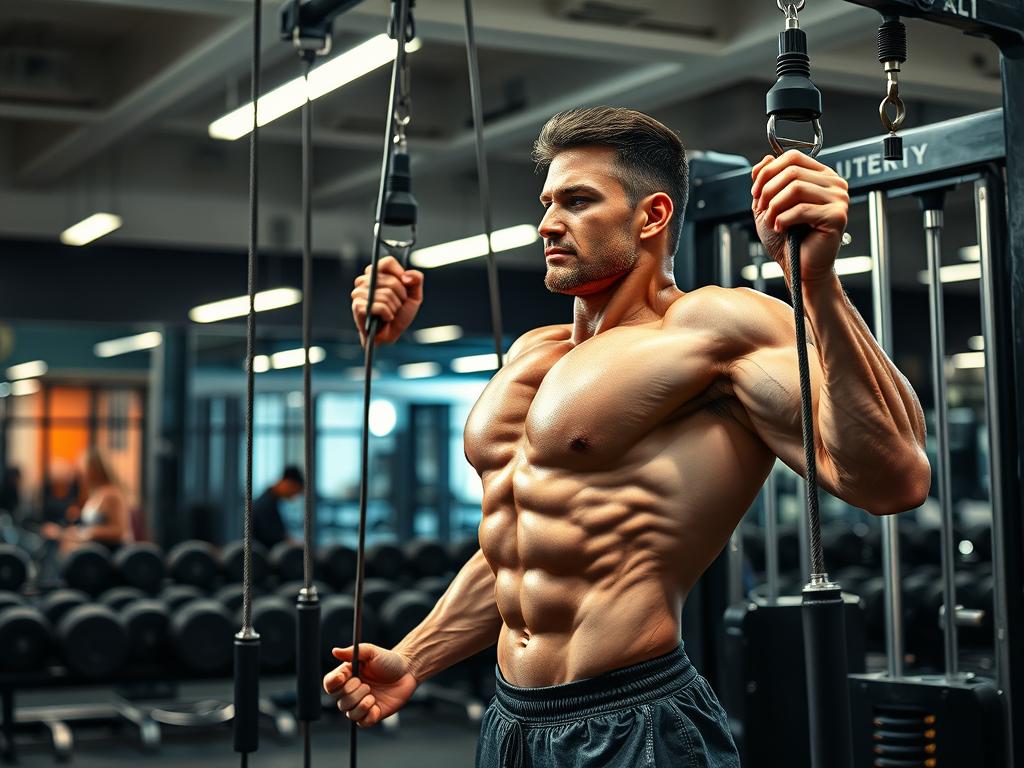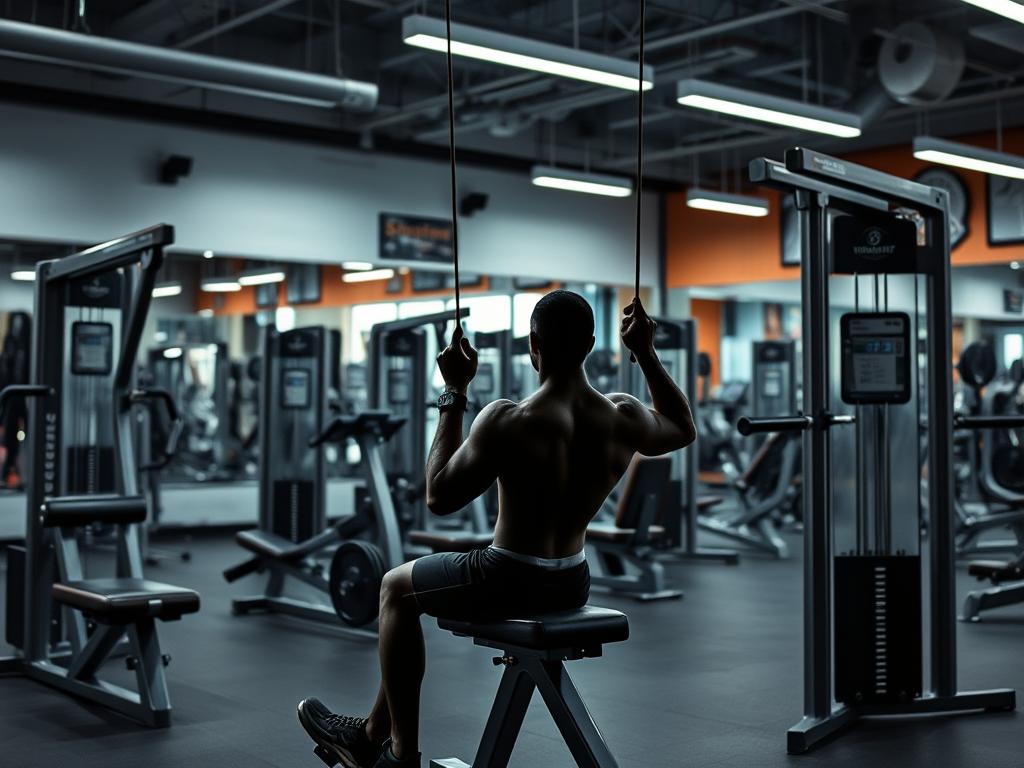When you walk into the gym, all worries fade away. Your goal is clear: to build a strong body. For many, this starts with the shoulders. They are key for upper-body strength and being athletic1.
Whether you lift weights often or are new to fitness, cable shoulder workouts are crucial. They help you build strong deltoids and improve muscle power.
This guide will show you 7 cable exercises to change your shoulder workout. You’ll see results that make people stare and feel jealous.
From seated cable lateral raises to cable face pulls, each exercise targets your deltoids from different sides. This ensures your shoulders grow evenly and get stronger1.
So, say hello to balanced shoulders and goodbye to imbalances. You’ll get delts that are as strong as a cannonball.
Key Takeaways
- Cable shoulder exercises target the deltoids, trapezius, and rotator cuff muscles for balanced upper-body development.
- Lateral raises, front raises, and shoulder presses using cables engage the deltoids from multiple angles, promoting a rounded, sculpted look.
- Cable movements like face pulls and rear delt flyes strengthen the posterior deltoids and upper back, improving shoulder health and posture.
- Incorporating a variety of cable shoulder exercises into your routine can help you build functional strength, enhance athletic performance, and achieve a more aesthetic physique.
- Proper form and mind-muscle connection are crucial for maximizing the benefits of cable shoulder workouts and avoiding injury.
Muscles of the Shoulder
To get the most out of cable shoulder exercises, knowing the main muscles is key. The shoulder is made up of many muscles that work together. They help with strength, stability, and moving the shoulder.
Deltoids
The deltoids are the main muscles of the shoulder. They are on the outside and help lift the arm up and forward. Making the deltoids strong is important for wider, more defined shoulders.
Trapezius (Traps)
The trapezius muscle is in the upper back. It helps lift the shoulders and pull the shoulder blades back. Working the traps can improve your posture and make your upper back look more muscular.
Rotator Cuff Muscles
The rotator cuff is a group of four small muscles. They help keep the shoulder stable and controlled. It’s important to strengthen the rotator cuff to prevent injuries and keep the shoulder healthy.
Rhomboids
The rhomboids are between the shoulder blades. They pull the shoulders back and down, which helps your posture. Adding exercises for the rhomboids can enhance your cable shoulder workout.
Knowing how each muscle in the shoulder works helps you create a good training plan. This plan will target all the important muscles for the best results.
| Muscle Group | Primary Function | Key Cable Exercises |
|---|---|---|
| Deltoids | Shoulder abduction and flexion | Seated Cable Lateral Raises, Cable Front Raises |
| Trapezius (Traps) | Shoulder elevation and scapular retraction | Cable Upright Rows |
| Rotator Cuff | Shoulder joint stability and control | Cable Rear Delt Flyes, Cable Face Pulls |
| Rhomboids | Shoulder blade retraction and depression | Single-Arm Cable Lateral Raises |
Best 7 Cable Shoulder Exercises
Here are the top 7 cable shoulder exercises :-
Seated Cable Lateral Raises
Exercises like the seated cable lateral raise are key for strong deltoids. They focus on the middle deltoids, which add width and shape to the shoulders. Doing seated cable lateral raises helps strengthen this important muscle group.
How to Do
- Sit on a bench with your back straight and core tight.
- Hold the cable handles at your sides with palms down.
- Keep your arms straight and lift the handles out until they’re level with the floor.
- Slowly bring the handles back down to start.
- Do this for the number of reps you want.
Make sure to control your movements and don’t swing the weights. Focus on squeezing the middle deltoids. This will help you get broad, impressive shoulders.
| Exercise | Sets | Reps |
|---|---|---|
| Seated Cable Lateral Raises | 3-4 | 12-15 |
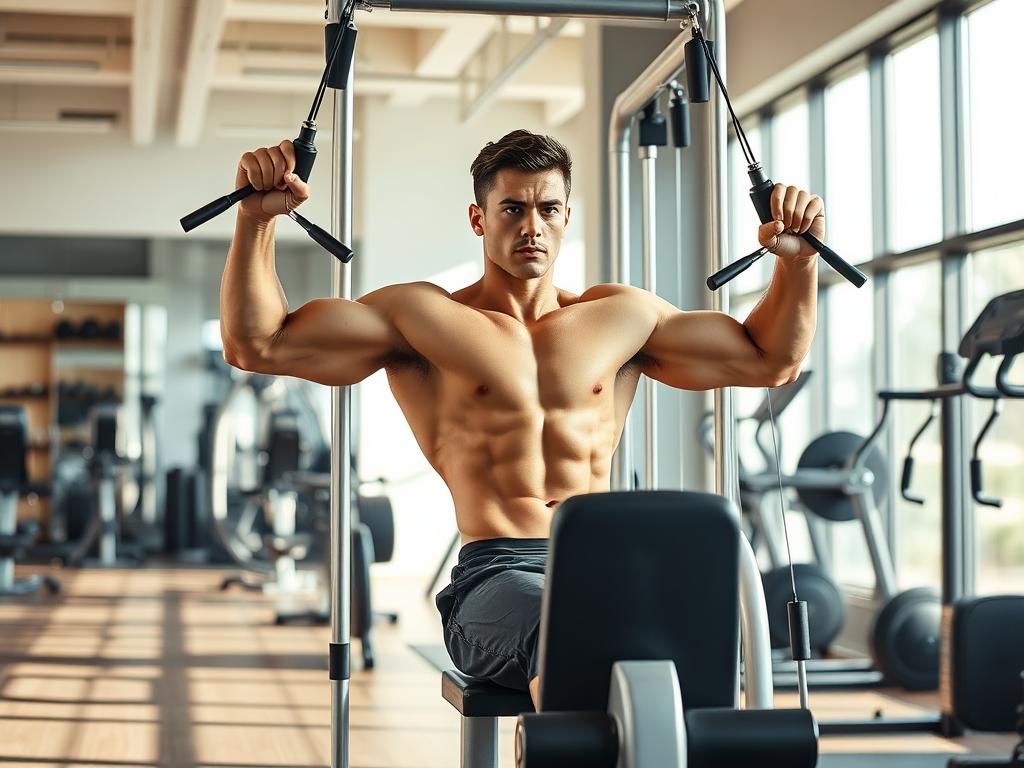
Adding seated cable lateral raises to your workout is great for the middle deltoids. This exercise, along with others, helps build strong, muscular shoulders2.
Cable Front Raises
Cable front raises are great for the front deltoids. They help with pushing movements. This exercise uses a cable station for constant tension, building strength and flexibility3.
How to Perform Cable Front Raises
- Stand facing a cable station with your feet shoulder-width apart.
- Grasp the handles with palms facing down and your arms extended at your sides.
- Keeping your core engaged, raise the handles straight out in front of you until your arms are parallel to the floor.
- Slowly lower the handles back to the starting position, maintaining control throughout the movement.
| Exercise | Sets | Reps |
|---|---|---|
| Cable Front Raises | 3-4 | 12-15 |
Adding cable front raises to your workout strengthens your front deltoids. It also boosts shoulder mobility and flexibility. This exercise is key for strong, powerful shoulders4.
“Cable front raises are a game-changer for building strong, defined anterior deltoids. The constant tension provided by the cable setup really takes this exercise to the next level.”
Always keep the right form and control. This will help you get the best results. Regular practice will show you the benefits. Try cable front raises and see the difference for yourself.
Cable Upright Rows
The cable upright row works your shoulders, traps, and rear delts. Stand in front of a cable station and hold the handles with your hands facing down. Pull the handles up to your chin, leading with your elbows. This targets your middle and rear deltoids and upper trapezius for a full shoulder workout5.
How to Perform
- Stand facing a cable station with your feet shoulder-width apart.
- Grasp the cable handles with an overhand grip, palms facing down.
- Keep your core engaged and your back straight as you pull the handles straight up towards your chin, leading with your elbows.
- Pause briefly at the top of the movement, then slowly lower the handles back down.
- Repeat for the desired number of reps, focusing on controlled, deliberate movements.
Keep your elbows high and close to your body for proper form. This targets the right muscles. Cable upright rows are great for a shoulder workout, building strength and definition in your traps, rear delts, and upper back5.
| Exercise | Sets | Reps |
|---|---|---|
| Cable Upright Rows | 3-4 | 10-15 |

“Proper form is key when performing cable upright rows. Keep your elbows high and your core engaged to ensure you’re targeting the right muscle groups and getting the most out of the exercise.”
Shoulder Press
The shoulder press, also known as the overhead press, is a classic exercise. It targets the deltoids, triceps, and upper chest muscles. This exercise builds strong deltoid strength and helps keep your core stability strong as you lift the weight overhead.
How to do
- Stand facing a cable machine with your feet shoulder-width apart. Hold the cable handles at shoulder height with an overhand grip.
- Engage your core stability by bracing your abdominal muscles and keeping your back straight.
- Press the handles straight overhead, extending your arms fully while keeping your elbows close to your body.
- Pause briefly at the top of the movement, then slowly lower the handles back to the starting position.
- Repeat for the desired number of repetitions, keeping your core engaged throughout.
The cable shoulder press is great for building deltoid strength and upper body power. Always keep proper form and control to get the most benefits and avoid injury.
| Exercise | Sets | Reps |
|---|---|---|
| Cable Shoulder Press | 3-4 | 10-12 |
“The cable shoulder press is a fantastic exercise for targeting the deltoids and building upper body strength. It’s a must-have in any well-rounded shoulder workout routine.”
Cable Rear Delt Flyes
This exercise targets the rear delts and upper back muscles. It helps fix poor posture and balance your shoulders7.
These muscles help extend and retract the shoulder blade. It fixes muscle imbalances and boosts shoulder stability, which is key for health and performance7.
How to Do It
- Attach a rope handle to a high pulley on a cable machine.
- Grasp the rope with an overhand grip, palms facing down, and step back until there’s tension.
- Keep your core tight and back straight. Slowly bring the rope to your face, leading with your elbows and squeezing your shoulder blades together.
- Pause briefly, then slowly return to the start with control.
- Repeat for the desired number of reps, keeping proper form.
Adding cable rear delt flyes to your routine strengthens the rear deltoids. It also improves your posture and shoulder health7.
| Sets | Reps |
|---|---|
| 3-4 | 12-15 |
Always focus on good form and control. This ensures the exercise works well and keeps you safe7.
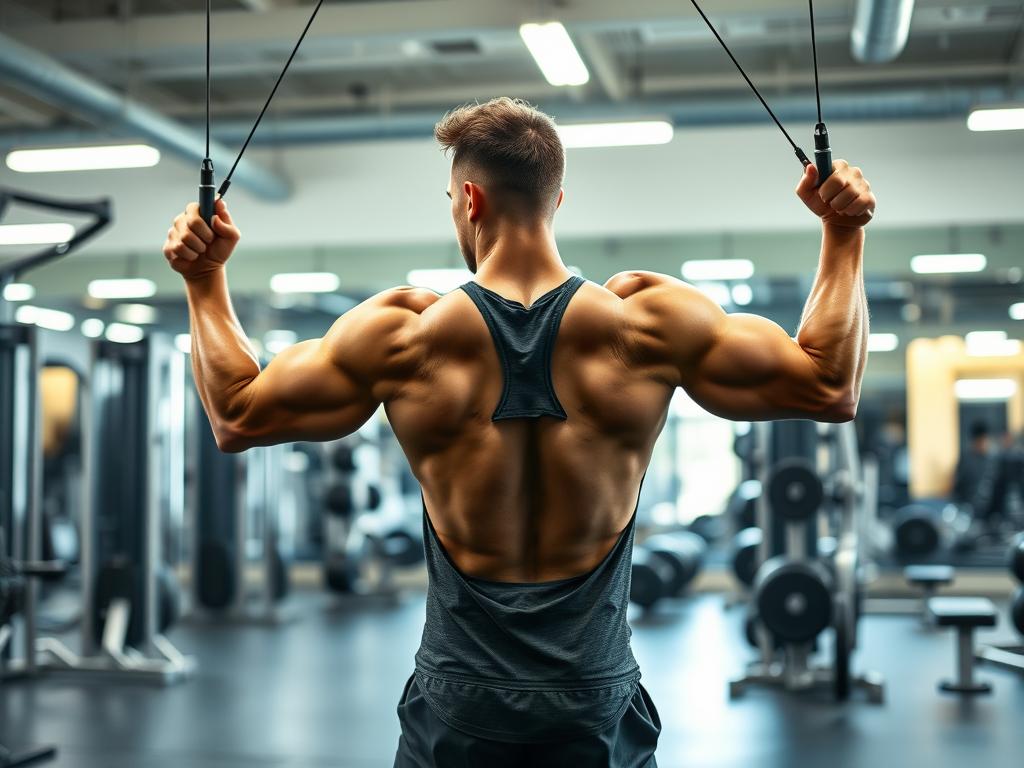
Single-Arm Cable Lateral Raises
It helps fix muscle imbalances8. This exercise works your deltoids, core, and shoulder stabilizers for better form9.
Single-arm cable lateral raises target the deltoid muscle’s lateral head. It’s an isolation exercise that helps balance your shoulders7. Training each shoulder separately ensures they grow equally strong.
How to Perform
- Stand sideways to a cable station, with your feet shoulder-width apart.
- Grasp the handle with your far hand, keeping your arm straight and your elbow close to your side.
- Slowly raise the weight out to the side until your arm is parallel to the floor.
- Pause briefly at the top of the movement, then slowly lower the weight back to the starting position.
- Repeat for the desired number of reps, then switch sides and complete the same number of reps.
Keep your spine neutral and core tight for proper form9. This exercise also strengthens your shoulder stabilizers. It helps find and fix muscle imbalances between your sides.
| Exercise | Sets | Reps |
|---|---|---|
| Single-Arm Cable Lateral Raises | 3-4 | 12-15 per side |
Include single-arm cable lateral raises in your workout for balanced deltoids and better shoulder stability8. Focus on form and control to get the most benefits and avoid injuries.
Cable Face Pulls
Cable face pulls are great for the rear deltoids. They also help with shoulder strength and posture. You pull a rope towards your face, working your upper back and shoulders.
How to Perform
- Attach a rope to a high pulley on a cable machine.
- Grab the ends of the rope with an overhand grip, hands placed about shoulder-width apart.
- Keep your core tight, pull the rope to your face. Lead with your elbows and squeeze your shoulder blades at the top.
- Pause, then slowly go back to the start.
- Do this for the number of reps you want.
Cable face pulls strengthen the rear deltoids and upper back. This helps fight poor posture and balances your shoulders. This exercise is a must-have in any shoulder-focused workout routine.
| Exercise | Sets | Reps |
|---|---|---|
| Cable Face Pulls | 3-4 | 12-15 |
“Strengthening the rear delts with exercises like cable face pulls is crucial for maintaining good posture and preventing shoulder imbalances.” –

Adding cable face pulls to your routine strengthens the rear deltoids. It also boosts your upper back and shoulder stability. This exercise is key for a strong and balanced shoulder and upper body.
Why to train shoulders using cable machine?
Adding cable shoulder exercises to your workout has big benefits. The cable’s constant pull makes your muscles work hard. This leads to stronger and bigger muscles7.
Cable workouts also make your shoulders more stable. This is good for your joints and muscles7. You can focus on specific muscles, making your shoulders balanced and strong.
- Cable exercises provide constant tension, leading to increased muscle activation and growth7.
- The unstable nature of cable exercises improves shoulder joint stability and overall shoulder health7.
- Cable exercises allow for targeted, controlled contractions of the shoulder muscles, promoting balanced development.
Using different cable shoulder exercises can strengthen your shoulders. You’ll work on the deltoids, traps, and rotator cuff muscles. This also boosts your shoulder stability and joint health. It’s a great way to get strong and balanced shoulders.
By doing these cable shoulder exercises, you’ll make your shoulders stronger. You’ll see better muscle activation, joint stability, and overall shoulder growth.
Recommended Sets and Reps
To build strong shoulders, do 3-4 sets of 10-15 reps for each exercise. Start with fewer reps for tough moves like the overhead press and cable upright rows. Use more reps for lateral raises and rear delt flyes to work specific muscles hard. Rest for 60-90 seconds between sets to keep muscles tense.
Do these 7 cable exercises 2-3 times a week for broad shoulders. Good exercise programming and focus on muscle building are crucial for great results.
Here’s a quick guide for sets and reps for each exercise:
| Exercise | Sets | Reps |
|---|---|---|
| Seated Cable Lateral Raises | 3-4 | 10-15 |
| Cable Front Raises | 3-4 | 10-15 |
| Cable Upright Rows | 3-4 | 10-12 |
| Shoulder Press | 3-4 | 10-12 |
| Cable Rear Delt Flyes | 3-4 | 12-15 |
| Single-Arm Cable Lateral Raises | 3-4 | 12-15 |
| Cable Face Pulls | 3-4 | 12-15 |
Always listen to your body and adjust as needed. This ensures proper form and gets the most out of your shoulder workout. Being consistent and detailed is key to achieving the desired shoulder shape.


